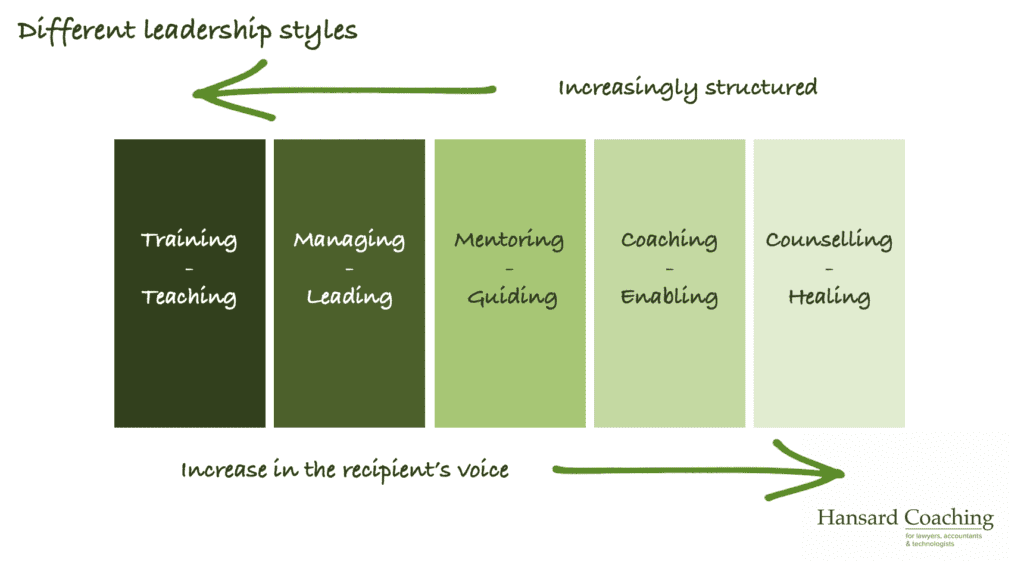Manager, mentor or coach?

Some of us are naturally quite authoritarian leaders; others operate more comfortably as a mentor or a coach. Being aware of where you sit on this continuum, and being able to move between these styles, will help you become more effective.
Being clear when to step in, take the reins, and even insist on particular activities or behaviours is always an important part of any leader’s armoury.
The diagram shows a scale of some of the interventions a leader might use; most leadership activities will focus around the middle of the scale.
At times, there is a requirement to mentor and guide those around us; then to coach, cajole and enable a team to find their own answer to or route through a particular challenge.

Similarly, knowing when to listen more, or to give a particular project or decision-making process more structure are important dials a leader needs to turn up and down.
Moving from one activity to another can be challenging, particularly for a new leader when it has to be done consciously. But soon, over time, leadership muscle memory will evolve and stepping back, letting the team determine the way forward, will be just as natural as imposing one’s will. Empowering others usually drives better results and more enduring change.
However, a leader’s flexibility should never be ignored or underrated. Different circumstances and different business requirements drive the need for an effective leader to adapt and behave in a different way.
Similarly, being prepared to try something new, and take a risk on those around you can bear just as much fruit as forcing a decision. Knowing when to call on different styles to get the right outcome is the true mark of an effective and additive leader.